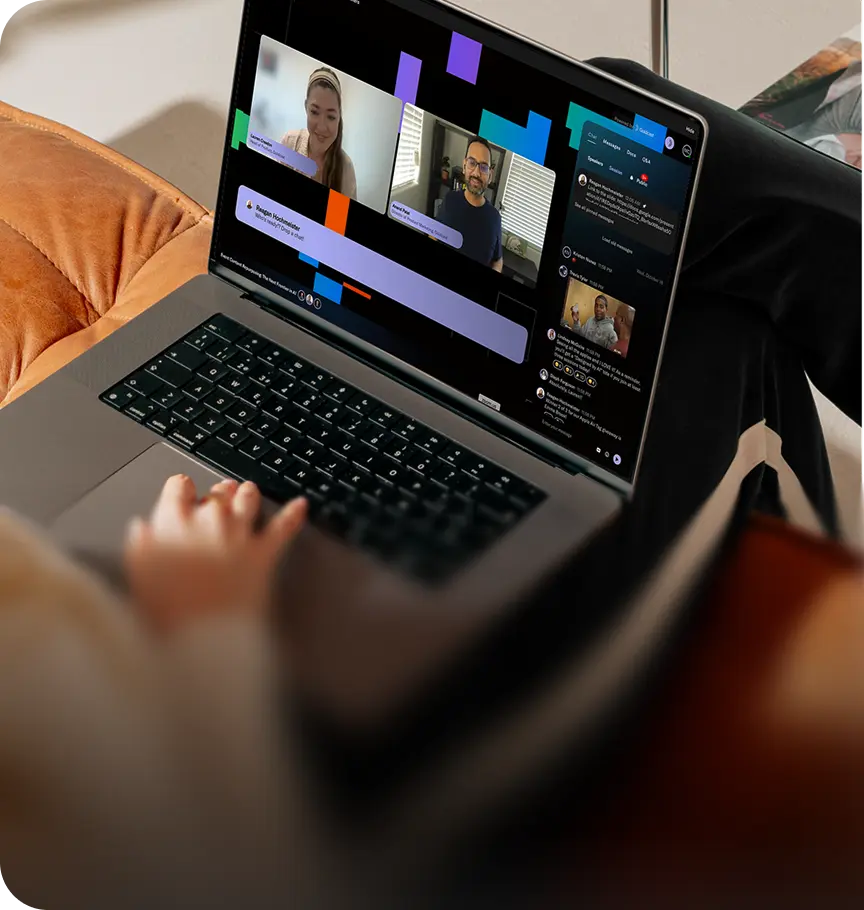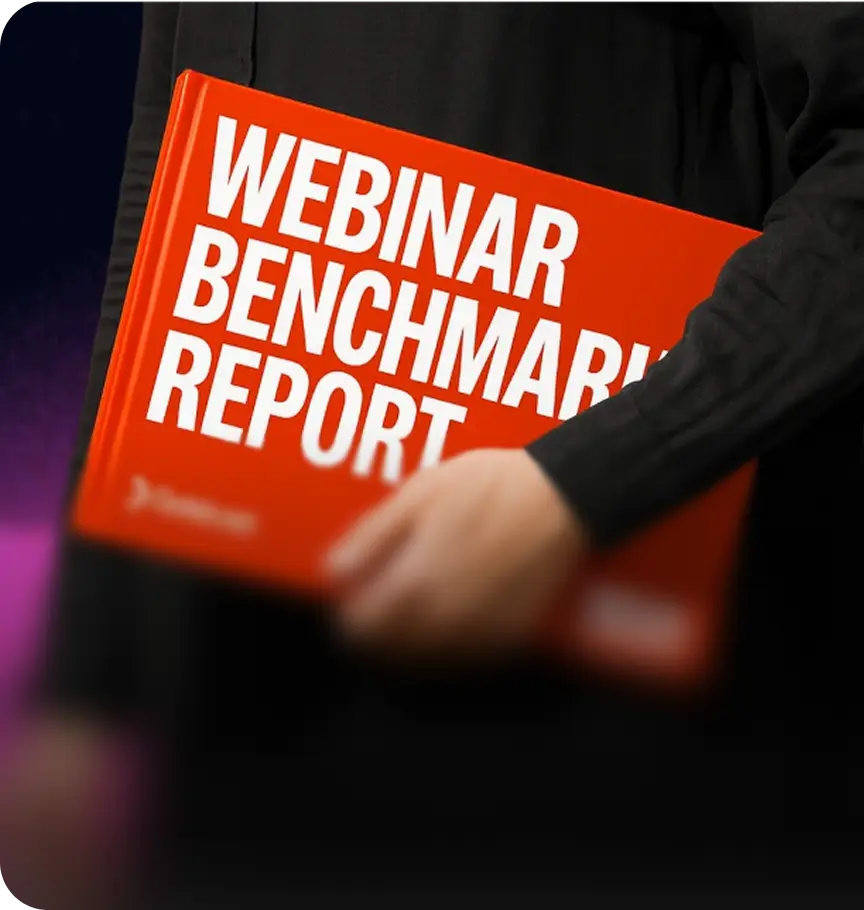Beyond Cookies: Personalization That Actually Converts

Table of Contents
Maximize Your Marketing ROI
Join 10,000 other marketers already getting the best tips on running engaging events that boost pipeline and create raving fans.
Remember when personalization meant slapping someone's first name in an email? Those days are long gone. B2B buyers expect hyper-relevant experiences at every touchpoint—and they expect them now.
But in a privacy-first world, is personalization at scale impossible? Only if you're using yesterday's playbook.
The new rules of privacy-first personalization
The marketing landscape is shifting…again.
Third-party cookie deprecation, privacy regulations like GDPR and CPRA, and a flood of AI-generated slop have created the perfect storm.
And in the midst of it all, buyers aren't lowering their expectations—they're raising them.
Research from Epsilon reveals that 70% of marketers think digital advertising will take a step backward as a result of cookie deprecation. Fewer than half (46%) feel "very prepared" for a world without cookies.
As marketers, we know the solution isn't to panic, but to adapt. And fortunately, there are some pretty cool new tools to help you do that.
4 strategies to execute personalization at scale
Even in a cookieless future, it is possible to personalize at scale. We’ve got 4 practical plays to help you make connections that drive pipeline (without annoying your prospects).
1. Start with first-party data
The death of third-party cookies doesn't mean the end of personalization—it means getting smarter about first-party data collection.
“The major benefit of using your first party-data, whether it's an app, through your CRM, or your website, is the quality of people,” explains Silvio Perez, founder of AdConversion. “Because you've sourced them, they're likely to be of the fit that you want to reach.”
Here's how to earn your prospects’ first-party data:
- Tap into your event analytics: Use platforms like Goldcast to capture rich behavioral data from webinars and virtual events
- Enable progressive profiling: Build detailed customer profiles over time through strategic form fields and engagement tracking
- Create value exchanges: Offer premium content in exchange for zero-party data shared willingly by prospects
➡️ Here’s an example: At Goldcast, we’ve built a strategic event program that accomplishes these goals. Case in point: One of our recent events generated $2.2M in pipeline and 54 new opportunities in just two weeks.
The key is turning behavioral signals into immediate, personalized outreach based on account value.
“The moment someone registers, it's a very high intent moment," explains Goldcast co-founder Palash Soni. "They know what Goldcast is… they've interacted with it right now."
When someone registers for a Goldcast webinar, the platform automatically alerts the account owner in Slack with the following data:
- Account status
- Pipeline value
- Company size and fit
- Current deal stage
- Opportunity value
This single automation created 5X more enterprise opportunities compared to the previous event.
2. Create a high-value customer journey
No amount of data can save you if your tools don’t play nicely together. Most customer journeys involve at least three different channels. Prospects move between them expecting consistent, "in the moment" experiences.
That’s where CDPs, iPaaS, and AI-powered platforms can help. A customer data platform (CDP) creates unified customer profiles that update in real-time as prospects interact with your brand.
Here’s how that might look:
- Webinar behavior triggers email sequences: A prospect watches your cybersecurity webinar and your CDP triggers relevant compliance content in their nurture path.
- Account-based event invites: High-value prospects get personalized invitations based on their industry, role, and past engagement.
- Dynamic content delivery: Website visitors see different hero images, case studies, and CTAs based on their event attendance.
The right tech stack doesn't just enable personalization—it amplifies it, creating customized journeys across webinars, microsites, nurture flows, ad campaigns, and more.
➡️ Example: Zuora’s post-webinar personalization
Hayley Ferrante, Director of Digital Programs at Zuora, uses the Goldcast-Marketo integration to trigger workflows based on attendees' event activities.
"It's been a real boost to our events strategy," she explains. "We've been able to collect key information from Goldcast into Marketo to further optimize our event programs."
When someone clicks a demo CTA during a Zuora webinar, that action automatically creates a Smart List in Marketo for immediate follow-up.
But your personalization options don’t stop there. Using AI-powered content tools like Goldcast's Content Lab, marketers like Hayley can automatically tag and segment content based on viewer behavior.
From there, the data seamlessly flows back to your CDP, creating a prospect journey where each interaction is more personalized than the last.
📍 Automation in action: Personalizing the customer journey
Step 1: Event attendance
Step 2: Data collection
- Event platform + CDP captures poll responses, content downloads, session duration, chat engagement
Step 3: AI processing
- Content Lab auto-tags topics, clips key moments, generates transcripts
Step 4: Multichannel distribution
- Path A: Email nurture → Compliance-focused email series
- Path B: Sales outreach → Demo request with context
- Path C: Social content → LinkedIn video clips
- Path D: Website personalization → Dynamic case studies on next visit
When structuring your strategy, remember one rule: Quality over quantity.
One relevant touchpoint beats ten generic ones.
"If we can take a little snippet that's 20 seconds and personalize it for that person," explains Tim Duranleau, SVP Global Marketing at Medallia, "there's some level of authenticity there."
Stop manual personalization. Start scaling. Test drive Content Lab's CDP integration.
3. Make automation your friend
When you pair first-party data with AI, you get the best of both worlds: automation that scales and touchpoints that feel human.
In our event, How Top Marketing Teams Really Use AI, Jared DeLuca, Director of Operations at Appcues explained how he uses ChatGPT to build and automate first-party data collection.
"I was able to build from scratch a functional website quiz that includes uploading our leads to HubSpot, going through the process, taking all of the results, and bringing those into HubSpot and Salesforce so the sales team can see the actual results from people," Jared explains.
This kind of automation can turn every interaction into sales intelligence, creating seamless handoffs between marketing touchpoints and sales conversations.
For example, instead of sending the same generic post-event emails, Goldcast's Drift integration enables real-time prospect engagement immediately after your events.
When someone attends an event, Drift's conversational AI automatically:
- Engages with qualifying questions
- Schedules demos on the spot
- Routes high-value prospects to sales
- Personalizes follow-up content
The best part is, you can structure your automations however you need. Webhook-powered event invites? Live Q&A clips personalized by persona trigger? “Choose-Your-Own-Adventure” webinars for specific account segments?
With the powerful combination of AI and automation, it’s all possible.
Book more meetings, automatically. 🎉 Discover how customers are securing dozens of qualified meetings through the Goldcast + Drift integration.
4. Measure what matters
The key to tracking personalization ROI isn’t just tracking engagement—it’s tracking the right engagement and turning it into something actionable.
And it all starts with asking the right questions.
"You have to be very strategic," explains Kelly Cheng, Head of Marketing at Goldcast. "When you're asking a poll question, you're truly asking a question that will impact a customer lifecycle journey. This is a great place where you can strategize with your go-to-market sales teams to really understand if there are any qualifying questions that they're asking in the beginning of their discovery calls."
Track these key metrics to prove ROI:
- Poll responses and resource clicks: Feed this first-party data into your nurture campaigns and lead scoring models
- Engagement rate lift: Compare personalized vs. non-personalized content performance
- Pipeline velocity improvements: Track how engagement accelerates deal progression
- Customer lifetime value increases: Measure the long-term impact of personalized experiences
The goal is to create a feedback loop where data directly informs your sales team's discovery process and your marketing team's nurture strategies.
"You can take this first-party data, track that very closely, and increase lead scores," says Kelly.
5-step deployment blueprint
Ready to launch your privacy-first personalization strategy? Here's your roadmap:
- Audit your personalization stack
- Review your existing tools (CDP, CRM, event platform)
- Identify gaps in first-party data collection
- Assess privacy compliance across touchpoints
- Define priority personas & account triggers
- Map key behavioral signals (like Zuora's demo CTAs)
- Set engagement thresholds for different account tiers
- Create trigger criteria for sales handoffs
- Build the content flow
- Connect your tech stack integrations
- Set up automated workflows for different personas
- Create personalized content paths based on event behavior
- Run a pilot
- Start with a single high-value segment
- Track key metrics (poll responses, resource clicks)
- Measure engagement lift and compare against non-personalized baseline
- Scale using AI + automation
- Expand successful workflows to more segments
- Implement AI-powered content distribution
- Optimize based on performance data
Build a personalization engine with Goldcast
The end of third-party cookies isn’t the end of personalization. It’s just another opportunity for marketers to do better.
By 2026, the most personalized buyer journeys won’t just be a plus—they’ll be your only pipeline.
At Goldcast, we’re here to help make that happen with a privacy-by-design approach:
📝 First-party forms: Every form captures exactly what your sales team needs to know—without overwhelming prospects. Built-in Smart Forms means returning attendees never have to enter the same information twice.
⏭️ Behavior-driven CTAs: Serve relevant resources based on which content sections viewers engage with—no cookies or tracking pixels required.
🎥 Auto-personalized clips: Get faster turnaround on ABM plays. Create account-specific video highlights instantly, like ROI stats for enterprise or quick-start tips for smaller companies.
Goldcast's native GDPR compliance and secure data handling mean you never have to choose between personalization and privacy. Every interaction is automatically privacy-compliant, letting you focus your energy on creating the kind of experiences that build trust and drive engagement
→ Start building your personalization engine: Transform your existing content into multiple video assets - free, no credit card needed. Sign up now.
Transform Your Video Marketing with AI
Stay In Touch
Platform
Resources
© 2025 Copyright Goldcast, Inc. All rights reserved.





 Upcoming Events
Upcoming Events Event Series
Event Series On-Demand Events
On-Demand Events

